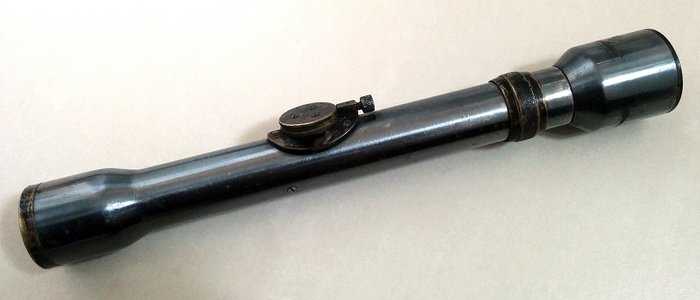

The PU riflescope was also used with Russian semi-auto sniper rifle experiments, so there are a couple of different variants of the exterior shape. PU was simpler to manufacture, resisted fogging and other issues better and proved to be a very capable and rugged design. PEM was replaced with the PU scope which was a very different design: much more compact and with a different mounting system. Shortly, it was modified into PEM which looked about the same but had fewer adjustments and was a bit more robust. The original scope was copied off of a German Zeiss design, and Zeiss even went so far as helping set up a manufacturing facility in Russia. In the 1930s, after modernizing the venerable Mosin-Nagant rifle into the 91/30 variant, an effort was made to make it into a sniper rifle. They had to virtually restart it after running into issues with Russian precision shooters during WWII). During WWI, German snipers were so effective on the Eastern front that, even through the turmoil of the revolution and other geopolitical perturbations, Soviet/Russian military always kept the sniping program alive in some way (weirdly enough Germans abandoned their sniper program since Hitler thought that racially superior Aryan soldiers were so good, no special training was necessary.

The Origin Of PU Scopesįirstly, a few words about the origin of PU scopes.īy the time WWII came about Russian military had a pretty advanced sniper program. With that history in mind, when the good folks at 1800GunsAndAmmo got a hold of me and asked if I would evaluate a few modern PU scope replicas, I jumped at the opportunity. Fast forward a few years and I’ve got a bit over a dozen of them with four wearing scopes PU scopes among them. Despite being dirt cheap, it proved to be quite accurate and a lot of fun. One of the first rifles I bought was a Mosin-Nagant.

I moved to the States when i was a teenager and became interested in guns when I was in college. Growing up in Soviet Union, I could only see a Mosin-Nagant sniper rifle on a screen, since private firearm ownership was not exactly encouraged. However, such is the mystique associated with snipers that we pushed our sarcasm aside and watched with bated breath. Another thing we noticed was that Russian snipers never missed. Apparently, lack of ammunition was the only way a mighty Russian soldier could meet his demise.
Scopes during ww2 movie#
Unless, of course, the protagonist of the movie was about to be killed by an iconically evil German soldier. For example, we noticed that five shot Mosin Nagant rifles apparently never ran out of ammo. By the time the 80s came about we were all accomplished young cynics capable of great feats of sarcasm, much of it applied to the war movies. We called it the Great Patriotic War, since in the Soviet Union the fact that other countries aside from Germany and Russia were involved did not get a whole lot of air time. I was largely a child of the 80s, but despite the fact that WWII was long over, we were all brought up on a great variety of WWII movies. But they were not available until 1943.Īn image of the Mk.I grew up in Russia (Soviet Union at the time). These measures eliminated the problem and were instrumental in improving bombing accuracy. The answer was a reflector gunsight nearly identical to those used in fighter aircraft.īeginning with the SBD-5, Mark VIII reflecting gunsights were installed, as were heaters for the windscreens. Sight was inadequate for aerial gunnery since it severely limited the Windscreen was also prone to fogging, and pilots said the tubular Temperature, and the resulting condensation clouded the lens. Over in a dive from high altitude because of a sudden change of The drawback to the telescopic sight was its tendency to fog Level in the dive, otherwise the bomb would go off on a tangent when The centered ball told him the aircraft was While keeping a ball much like that of a turn-and-bank indicatorĬentered in its groove. Pilot looked through the tube, lining up the crosshairs on the target Sight, a holdover from the open-cockpit aircraft of the thirties. The SBD-1 through the -4 were equipped with a three-power telescopic The fogging problems were solved by switching from a telescopic to a reflective gun sight.įrom The Dauntless Dive Bomber of World War Two by Barrett Tillman, chapter 1:


 0 kommentar(er)
0 kommentar(er)
